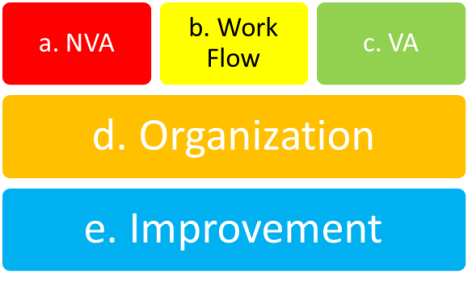This post is an overview to the various tools and techniques of lean manufacturing. As I was being introduced to these in my Six Sigma Green Belt class put on by ASQ.
1. Categories of Lean Tools & Techniques
In trying to keep the many tools & techniques straight in my head, I felt that I needed to organize them according to categories.
All manufacturing processes can be broken down into a) non-value-added activities, b) activities which are required by the manufacturing process which I will refer to as “work flow”, and c) value-added activities. You try to minimize a), streamline b), and maximize c). That’s the essence of lean manufacturing in a nutshell as it applies to individual processes.
Then, there are systems of Organization that apply to the manufacturing process as a whole, whose processes consist of categories a), b) , and c). And finally, you have systems of Improvement which apply to the individual processes AND the entire overall manufacturing process. That is how lean manufacturing operates on a system-wide level.
These categories can be summed up as follows:
|
Category |
Explanation |
|
| a) | Non-value-added activities | Minimizing activities that are non-value-added. |
| b) | Activities required by work flow | Streamlining work flow to the greatest degree possible. |
| c) | Value-added activities | Maximizing value in value-added activities. |
| d) | Organization | Creating a system of organization that supports the tools & techniques in a), b), and c). |
| e) | Improvement | Creating a system that improves a), b), c) and d). |
The relationship between the categories is probably made a little clearer by this diagram.

Once you understand these categories, it’s time to go through which lean tools & techniques apply to which category. That is the subject of the next post.
Filed under: Uncategorized |


Leave a comment